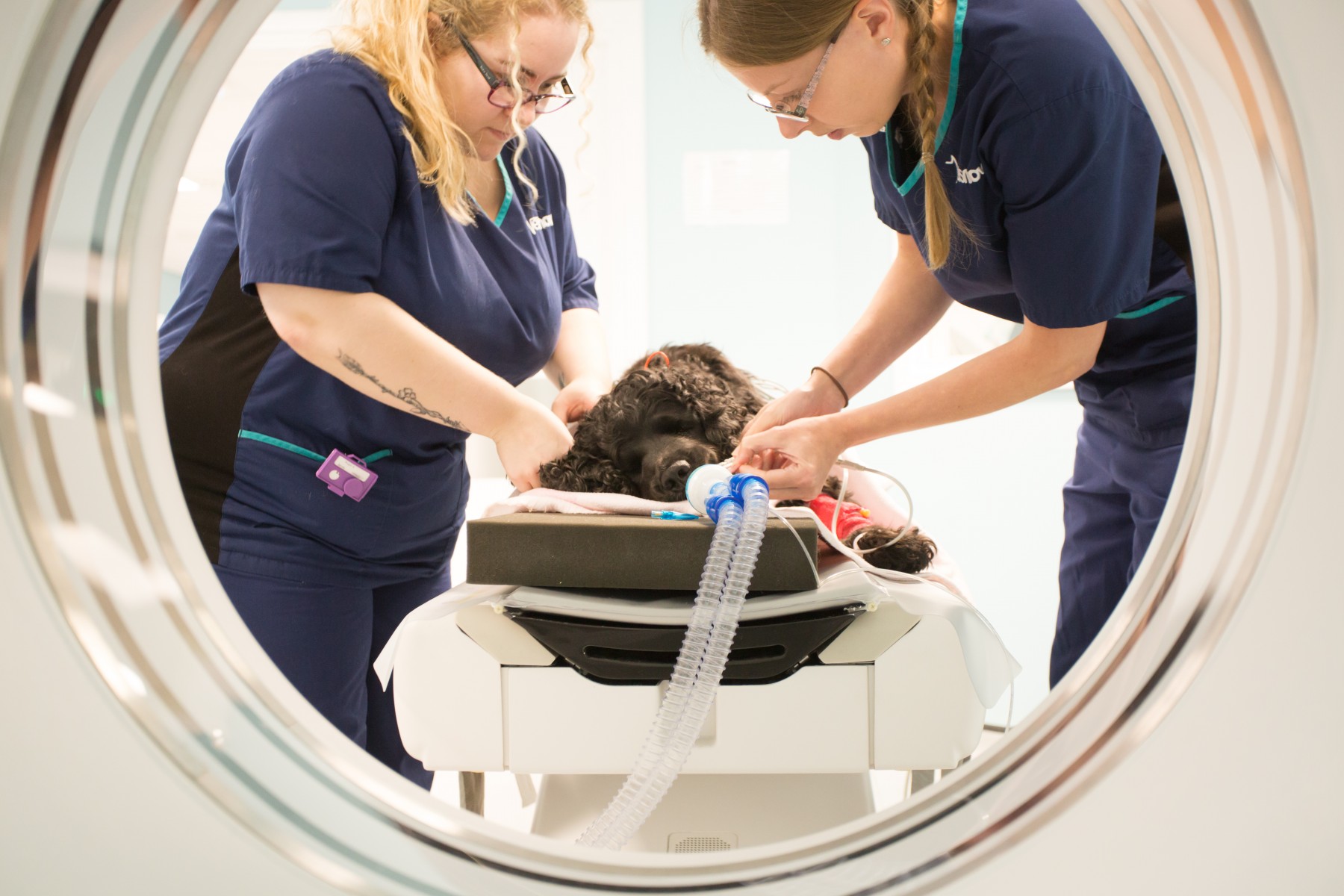Do you need help?

Are dog strokes the same as strokes in humans?
The chance of your dog suffering a stroke, in the same way a human would, is fairly low. Ischaemic dog strokes, a sudden lack of blood supply to the brain, and haemorrhagic dog strokes, bleeding within the brain, are rare in dogs and usually less serious than in humans. What’s not so rare are stroke-like symptoms such as a head tilt or poor balance. These are often caused by a condition called idiopathic vestibular disease (IVD) which affects the mechanisms in the inner ear. The word idiopathic simply means arising from an unknown cause.

What are the symptoms of idiopathic vestibular disease?
A vestibular attack in dogs tends to happen when they’re aged at least eight years or older, although it has been known to affect younger pets, too. It usually sets in very quickly and symptoms include:
- Loss of balance
- Dizziness
- Falling over
- Unable to stand
- Head tilted to one side
- Eyes flicking from left to right (nystagmus)
- Nausea and vomiting
- Reluctance to eat and drink
Dogs affected can become quite distressed and disorientated. Commonly they will pant heavily and may not interact normally with their owner. It’s also a frightening condition for owners, as it’s so sudden and dramatic.
What are the symptoms of a stroke in dogs?
It often depends on what part of the brain has been affected but dog stroke symptoms tend to be similar to symptoms of IVD. They can also include abnormal eye movements or positioning, abnormal behaviour and even blindness. It’s worth bearing in mind that the incidence of strokes in dogs is relatively low. So, if you see these symptoms and they begin to resolve after a few days to a week, idiopathic vestibular disease is the more likely diagnosis.
Do dog strokes or vestibular attacks require emergency treatment?
While strokes in dogs are rarer than in humans, they do happen and require urgent treatment from a vet. IVD, on the other hand, often resolves itself without any treatment. Some dogs may have an IVD episode which lasts a few hours, and then be back to normal the next day, while others may suffer for several weeks.
Our strong advice is to contact your vet if you’re worried about your dog. It is always better to be safe than sorry.

You might also be interested in:
Could my dog be suffering from something other than a stroke?
There are a few other conditions which can result in similar symptoms to strokes and vestibular disease and an examination and blood tests may help to rule some of these out. If your vet suspects there may be another underlying cause then they may recommend further testing such as an MRI scan. This is usually only necessary if your dog has other symptoms which are not normally associated with IVD or if they’re not showing signs of improving.
What is the treatment of IVD and strokes in dogs?
There is no specific treatment that can repair the damage done to the brain by a stroke. Your vet’s most likely course of action will be to focus attention on identifying a possible cause and treating it to prevent further strokes.
Likewise, until we understand the cause of IVD there’s nothing we can give to prevent or even treat it. However, where dogs are very nauseous we can give medication to help and in more severe cases where they struggle to hold down fluids, an intravenous drip may be required. Occasionally, sedation may be needed for dogs with severe disorientation.
If your dog is well enough to be nursed at home try to settle them in a quiet place and keep movement to a minimum until the dizziness subsides. Offer small amounts of water at regular intervals and hold off on food until any vomiting has stopped. Usually, symptoms will have improved considerably within 72 hours of onset.

